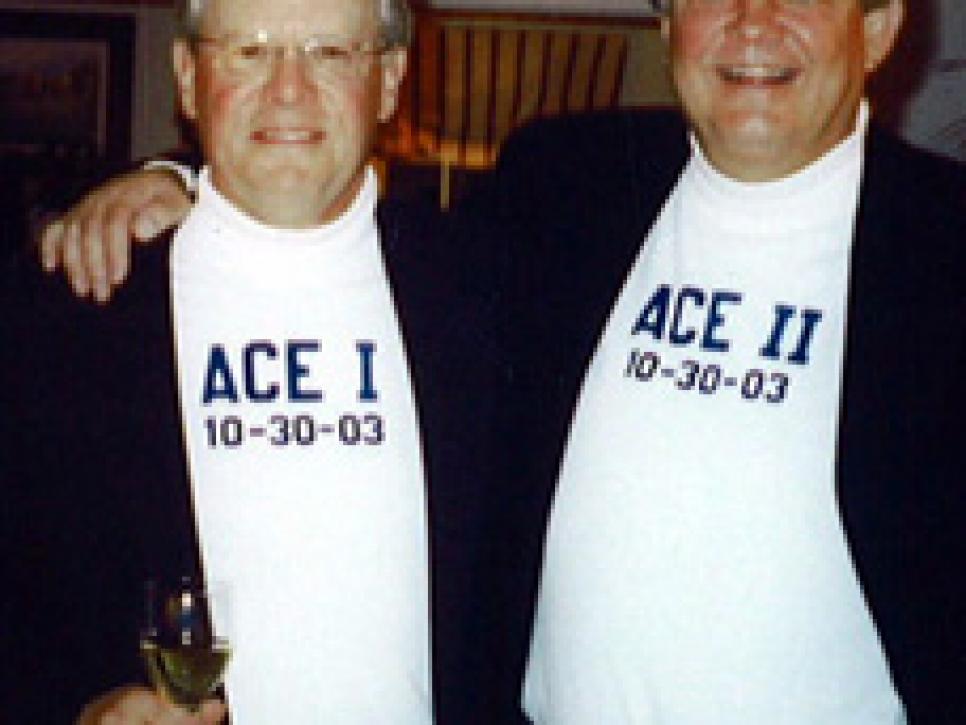News
Daily Double Addenda
Last week, we reported that Scott Wood and his wife, Stephanie English, made holes-in-one on the same hole within hours of each other (see Local Knowledge post: "Daily Double"). This happened on the sixth hole at Conway Farms in Lake Forest, Ill.

It seems Conway Farms members have a knack for making aces. Wood filled us in on a previous spate of one-shotters there, "On October 30, 2003, playing in a morning round, Bill Philip made a hole-in-one on the 150-yard 11th hole. Then later that day, Kevin Jordan (pictured far right) aced the 205 yard 17th hole, and the next player in his foursome, Kirk Malcolm (near right), aced his shot so there were two balls in the cup when the foursome reached the green.
That's not all. The next day, Kevin played and made two on the hole. The following day, he rested and the next day he ACED THE 17TH HOLE AGAIN!! Kevin played the 17th hole three times and had an aggregate score of 4! We will try to now take it to the next level and have three players in the same foursome ace the same hole on the same day. I won't be holding my breath," admitted Wood.
Malcolm emailed us to clarify the playing order, "In reality, I aced it first (hitting second in the foursome) and Kevin hit third. I always told him that once I showed him how, he really got the hang of it."
Golf Digest's keeper of records par excellence, Cliff Schrock, explains the rarity, "If the odds for two average players acing the same hole are 17 million to 1, and the odds for a low-handicap golfer making two aces in the same round are 67 million to 1, one player acing the same hole a few days apart and throwing in a birdie another time must be somewhere in the middle of that.
Since we don't have any scientific background to use in this instance, I would think the golfer who went 1-2-1, with a day off, achieved something in the vicinity of 33 million to 1.
And if you really want to get complicated and throw in the odds of a playing partner acing the same hole on the same day the other one holes out, then it's probably going back up again to a 50 million or 60 million to 1.
But when you start calculating odds for things that are quite defined like that, your best guess is just pure speculation, which is where we are with the additional golfer who aced No. 11 on the same day the other two were acing the same hole. I don't think the odds change for the two who aced the same hole, but the third person would need to have odds calculated for acing a hole on the same course where two golfers earlier aced a different hole.
That is so specific that the data isn't there to calculate it, and confounding the odds are what was done for the 1989 U.S. Open at Oak Hill.
When four pros aced the sixth hole within a few hours, we calculated the odds of any four golfers acing the same hole on the same day as 332,000 to 1. That seems incredibly low to me of lightning hitting the same spot four times in one day. So to me this is a case where you acknowledge the feat and just be amazed that so much good fortune took place on the same day on the same course."
Wood accurately describes Conway Farms as, "the Holy See of high-odds shots."
-- Topsy Siderowf*